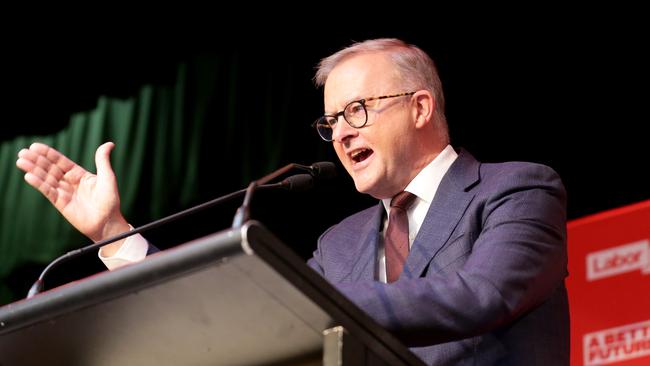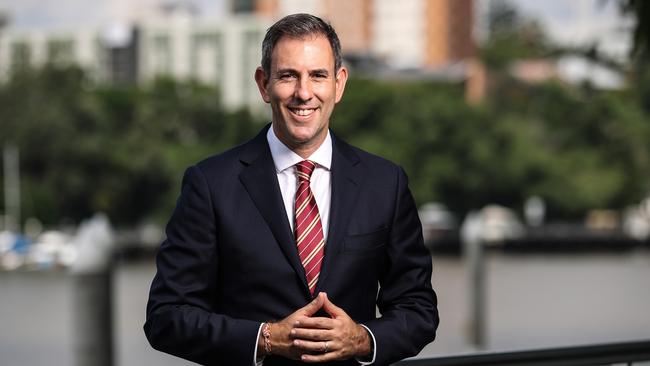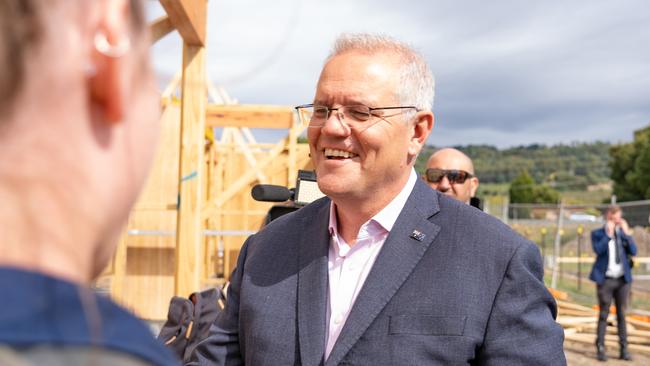Christopher Pyne: Australia has got through the pandemic but now turns to the future
Christopher Pyne makes his prediction on a date for the federal election, and says middle Australia is the key battleground.
Opinion
Don't miss out on the headlines from Opinion. Followed categories will be added to My News.
Last Tuesday was Treasurer Josh Frydenberg’s fourth Australian budget. Will it be his last? Or will shadow treasurer Jim Chalmers do his first later this year, as he has promised?
The thing about politics is that you don’t have to wait long to find out. National elections come around every three years. I predict that the 2022 Australian election will be on May 21. That means it will be called around April 14 to 17. In seven weeks we will either have a new government or a continuing one.
Budgets reset national politics.
The Coalition’s hope is that the Australian voter will decide that in challenging international and domestic environments, Frydenberg has handed down a budget that builds on the foundations laid for economic growth and reduced unemployment rates in 2021. Their position is that key measures in this year’s budget will ensure Australia remains competitive in the international economy, builds resilience to economic shocks, and alleviates cost of living pressures on Australian families.
The Australian economy grew by more than 3.4 per cent last year, and unemployment fell to 4.2 per cent, which in comparison to our international counterparts is a remarkable turnaround post Covid lockdowns.
In providing tax cuts for low and middle-income earners, increasing tax write-off concessions for businesses, activating a six-month cut of 22c (+ GST) on fuel excise and providing one-off payments for low and middle-income earners, the budget focuses on areas that will be key election battlegrounds for the government such as the environment, regional Australia, small business, defence and national security.

All of us are thoroughly over the Covid pandemic, but the budget makes it clear that we are far from through the economic effects of what is now a more than two-year affliction. Australia has been fortunate to have been able to get on top of outbreaks and to re-open the economy again, but the budget assumes there will be ongoing variants of the virus and that an allowance for ongoing significant costs needs to be made.
This situation will be particularly acute in this year’s winter with the likely return of the annual influenza season and potential new variants of Covid-19.
The Leader of the Opposition, Anthony Albanese, gave his traditional Thursday evening budget reply speech.

He wants the observer’s take-out to be that the budget contains no measures for wage growth, the cost of living measures are too little and too late, there is no plan for the future and the government is simply trying to buy votes.
It’s hardly new, but it’s worked before – think the 2007 Australian election when Kevin Rudd defeated John Howard.
Labor says anaemic wages growth, coupled with the government’s policies, have left the average worker $1355 worse off.
Further, they contend that the government’s cost of living measures are an ineffectual vote-buying exercise and don’t do enough to compensate for what they claim is the $3600 typical families are out of pocket for, due to cost of living increases.
Wages and cost of living is where Labor wants to fight the coming election. In his speech, Albanese announced a range of priorities for a Labor government. Among these were aged care, investment in renewable energy, domestic manufacturing, infrastructure and skilled work and training.
Further, he announced Labor would establish a “disaster ready fund” to mitigate the effects of disasters, a veterans’ hub aiming to get veterans quicker and better care, and more affordable housing.
The centrepiece of his pitch is an aged-care plan including a pay rise for workers in the sector, more funding, and a mandatory 215 minutes of care for each patient per day (a rather specific number).

Albanese claimed that Labor’s plan to drive investment in renewable energy will lead to 604,000 jobs by 2030, with five out of six of those jobs in regional Australia.
He wants a national reconstruction fund to revitalise manufacturing in Australia and promised to work with businesses to implement this. Let’s hope if he gets elected this is how it turns out. For us in South Australia, simply committing to the national naval shipbuilding enterprise and the huge investment in defence and space would be enough.
The speech also mentioned a plan for investment in infrastructure, a plan to create secure work and opportunities for training, and a cheaper childcare plan.
The opposition’s announcements do not include any costings. Therein lies their weakness and an area the Coalition will exploit in the next seven weeks to paint Labor as an economic risk. This strategy worked in 2019 and may yet again, unless Chalmers and Albanese can convince people otherwise.
For the Coalition, the hope is that voters will want to have a steady hand on the tiller during stormy times.
While for Labor, Albanese and his team want middle Australia to decide that a different government would have gone about dealing with the pandemic in a more satisfactory way and that for the future, the government’s priorities should be wages and service delivery in areas such as aged care.
Last week was quite politically tame. As election day gets closer, strap yourselves in as it gets a whole lot more desperate. Despite the famous indifference of the Australian voter, for the protagonists, they are playing for sheep stations.
More Coverage






